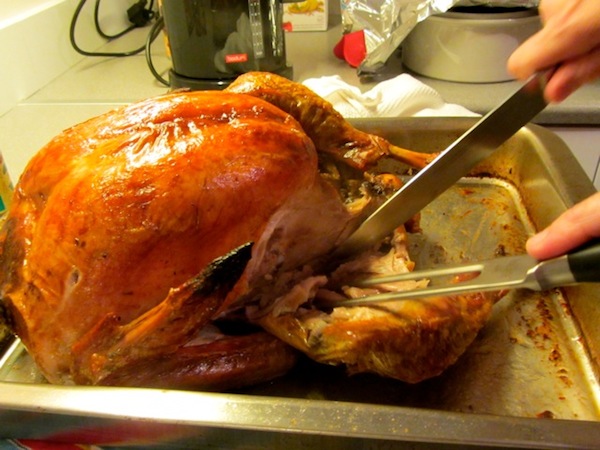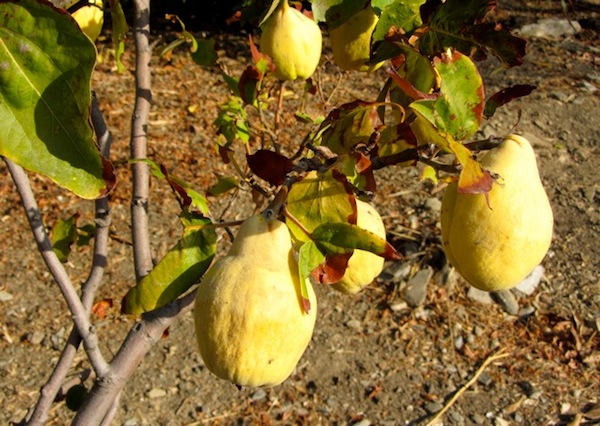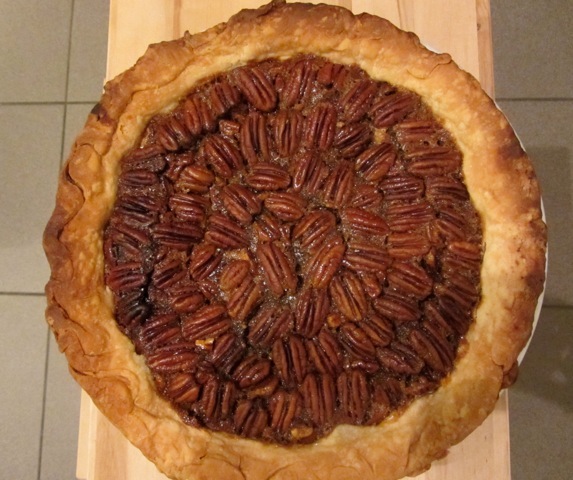Thanksgiving Reconsidered
Eating Well Is The Best Revenge
By Diana Farr Louis
“It’s the end of November and we haven’t even thought of turning on the central heating. With the lilacs blooming down the street, it feels more like spring than the brink of winter. There’s also the slight possibility that the slashes to our pensions played a role, making me feel poor and stingy. Whatever the cause, I seemed to have lost my appetite, literally and figuratively. For the very first time.” Diana Farr Louis
 ATHENS Greece—(Weekly Hubris)—11/26/2012—I couldn’t face Thanksgiving this year. The flurry of Thanksgiving survival kits dropping into my inbox, the relentless online prescriptions for the perfect turkey, the thought of having to plan, shop, cook, stuff the bird and myself, and then clean up—all left me panting with anxiety. I was a housewife on the verge of experiencing my first panic attack.
ATHENS Greece—(Weekly Hubris)—11/26/2012—I couldn’t face Thanksgiving this year. The flurry of Thanksgiving survival kits dropping into my inbox, the relentless online prescriptions for the perfect turkey, the thought of having to plan, shop, cook, stuff the bird and myself, and then clean up—all left me panting with anxiety. I was a housewife on the verge of experiencing my first panic attack.
What was wrong? Was it our on-going summer? It’s the end of November and we haven’t even thought of turning on the central heating. With the lilacs blooming down the street, it feels more like spring than the brink of winter. There’s also the slight possibility that the slashes to our pensions played a role, making me feel poor and stingy. Whatever the cause, I seemed to have lost my appetite, literally and figuratively.
For the very first time.
I’ve been celebrating Thanksgiving with gusto in Greece since 1972. It’s my favorite holiday, a time for getting together with friends and family and no strings attached. Everyone chips in, with a dish or a bottle, and the only obligation is to enjoy oneself.
I used to love the preparations. They started with a run round our supermarkets looking for a turkey. Our fanciest chain stocks fresh birds from the American Farm School near Thessaloniki. Raised to a plump 4-5 kg, they might seem anemic compared to those 30-pounders you get in the US, but they are infinitely tastier. And even their breasts are moist and not-cottony. They provoke the kind of appetite my cowboy brother Shelty had in mind when he’d drawl, “The only trouble with a turkey is that it’s too big for one and not quite big enough for two.”
But because there’s so much demand around Thanksgiving—think of the huge number of Greek-Americans, as well as a fair smattering of ex-pats—you have to grab a turkey when you find it. Heaven help you if you haven’t had the foresight to reserve. One Wednesday night, we must have hit every branch in the “Northern Suburbs” in our search. Only to end up with a frozen French fowl that barely defrosted in time to go in the oven.
Greek turkeys do exist but they don’t come on the market until Christmas and they are scrawny creatures with a 5 o’clock shadow of poorly plucked feathers. And so tough that in the old days cooks had to boil them before they were fit to be roasted.

With the bird in hand, in a manner of speaking, the next task I looked forward to was choosing the stuffing. Our favorite one comes from a Greek friend on Corfu (don’t ask). It’s incredibly elaborate, taking two days to prepare, and it calls for homemade cornbread, tangerines painstakingly divested of all white threads, cranberries, chestnuts, mushrooms, apples, sausage . . . And so rich the turkey’s almost superfluous.
I have it filed with my copies of Cook’s Illustrated for various Novembers. These are required reading every holiday season. I leaf through them, mulling over the pros and cons of high heat or low, the best technique for gravy and, of course, brining instructions. Brining, in case you haven’t been paying attention, is the latest refinement to ensure juicy, tender meat. But you do need a wash tub or a clean bucket big enough to hold the submerged bird, failing a special brining bag. Not always easy to procure.
Then there’s the guest list and the business of assigning who brings what, without attempting to include all the traditional American accompaniments. But secure in the knowledge that no one will suggest sweet potatoes with marshmallow fluff (one of the few things that makes my taste buds pull a disappearing act). I always try to invite one or two American friends who can help explain what the holiday means.
Generally, we stick to the myth. Why ruin the party with a discussion of perfidious White settlers and the eventual annihilation of the very natives who saved them from starving and taught them ecological farming practices? Instead, I read Art Buchwald’s version in Franglais, reprinted every year in the International Herald Tribune. Much more entertaining is his account of how Miles Standish (“Kilometres Deboutish”) brought about the first “Jour de Merci Donnant.”
Finally, the table’s extended and set with my mother’s silver; the smells from the kitchen have us swooning; and we bring the bird out. It is always “the best turkey ever,” and my son and I have an amicable squabble over the Pope’s Nose, which we share—along with all the tastiest morsels from the platter. He has taken over the carving (my husband the surgeon only slices into living flesh); I serve the full plates. And as always I’m reminded of my father’s motto, “Never worry about the dealer or the carver.” We know how to take care of ourselves.
But this year, none of this held any charm for me. I kept harking back to 1973 and my second Thanksgiving in Greece. Athens had just been rocked by the student uprising against the Junta at the Polytechneion on November 17th. The colonels reacted by imposing a curfew, among other things. With no gatherings of friends possible after dark, my holiday turned into a tryst, a candlelit chicken dinner for two. It was certainly the most romantic of Thanksgivings, our first together. And I could not have been more grateful for the concatenation of events that had brought “Joy of the People” and me together some months earlier. I blessed the curfew that made the evening so special.
![]()
I wrote the above two years ago, but the account mirrors today’s sentiments precisely. Our weather has been mild enough to encourage swimming, our pensions are now in freefall, our mood wobbles between despair and panic, when not reined in, so I am grateful beyond words to have been invited to an American friend’s turkey-day party.
When she called, I of course asked what we could bring and, to my surprise she said, “Nothing. Maybe a salad.”
A few days later, though, she rang again. “What on earth was I thinking of! To refuse an offer like that I must be mad.”
So we agreed I’d bring some Brussels sprouts, roasted in the oven with a maple glaze and crumbled hazelnuts, in a recipe lifted from The New York Times, while our houseguest, a Virginian, expressed a hankering for sweet potato pie.
But Greek sweet potatoes are greyish, they won’t look nice, so I pressed for pumpkin.

Last night, something happened to change the menu. I sliced some of our Andros quinces and threw them into a frying pan with some butter, softened them a bit before adding sugar and white wine, and then cooked them, covered, until they became deliciously caramelized.
I had quite a quince crop this fall, so this is what we’ll have for dessert, along with my friend’s pecan pie. Not traditional at all, but when I called to tell her, she said, “Talk about great minds: I was just thinking that something fruity would be just the thing.”
Next year, maybe I’ll be able to face turkey day with all the trimmings: fuss, angst, expense; fun, festivities, love and, especially, leftovers. But at this point, I’m just thankful to have dear friends who can take over, and some family within hugging/Skyping distance.
RECIPE
Here is MM’s recipe for pecan pie, which has been in her family for as long as she can remember. It is dead simple. Although she comes from New York, she thinks it “may have had its inception during the couple of postwar years we spent in Shreveport, where my dad taught Latin at a country day school before he got a position at a college Upstate.”

Make your favorite pie crust for a 9” pie dish.
Mix together and pour into crust:
3 eggs
1 Cup brown sugar
1 Cup dark corn syrup
2 Tablespoons butter
1/2 teaspoon salt
1/2 teaspoon vanilla extract
1 1/2 cups (6 oz) pecans
Bake at 450°F for 10 minutes; reduce to 350°F and bake for another 35 minutes.
Serve with whipped cream (sometimes flavored with whisky or brandy or rum).
Recently, influenced by photos I’ve seen in magazines, I keep about a cup of pecans to lay on top of the filling, and mix the broken ones that are left into the filling.

